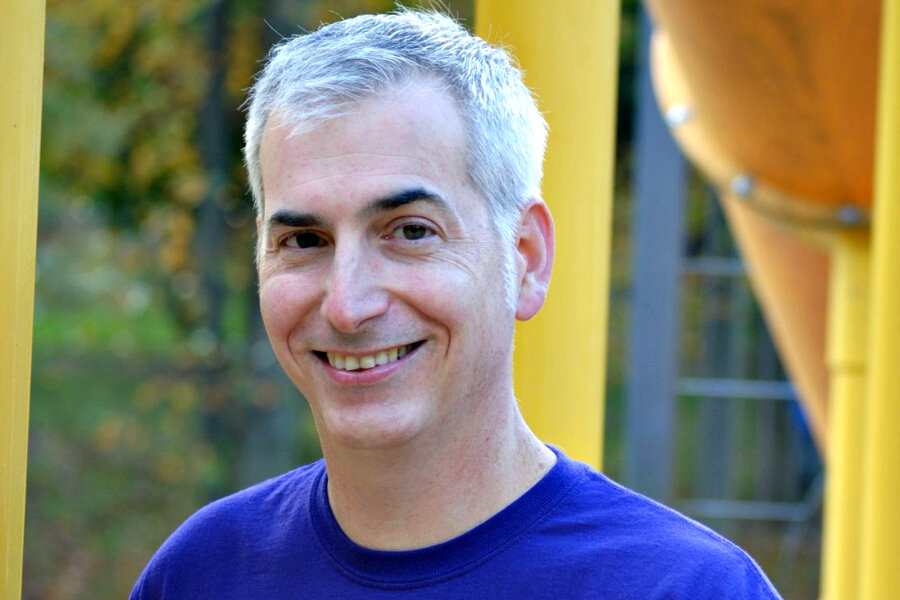KaBOOM! moves beyond the playground
Loading...
KaBOOM! is perhaps best known for its capacity to build a playground in spectacular fashion – mobilizing hundreds of volunteers to create a community asset in less than a day.
Today, with some 20 years and more than 16,000 playground built or improved serving more than 8 million children in its rear-view mirror, the nonprofit group is taking on another aspect of play: inspiring cities to consider children’s needs in all their future planning.
“We saw that the work we were doing was so critically important – and we knew that in every single instance there was a direct benefit for the kids,” says James Siegal, who joined KaBOOM! in 2012 and became chief executive officer Feb. 1. But “we also saw that the scale of the problem in society was much bigger than we would be able to tackle building one playground at a time.”
The days of quickly constructed playgrounds using community teams are far from over, Mr. Siegal says. “That is who we are, and that will never change,” he says. “On top of that, we are also really focused now on inspiring cities to build kid-friendly cities,” spaces that would meet the needs both of children and their families, he says.
In a conversation with The Christian Science Monitor, Siegal shared his experiences in Baltimore in the days and weeks following the death of Freddie Gray in April 2015 while in police custody, and the unrest that followed. The KaBOOM! team reached out to Baltimore organizations it had partnered with in the past.
“They were all trying to get kids to play, to help give them outlets for the adversity they faced in their daily lives,” he says.
That emphasis on the importance of play for children – particularly those in low-income households and facing adversity – resonated with Siegal and his team. It prompted a project that mobilized teens in the community to work for KaBOOM! as interns and apprentices.
“Not only are kids having the opportunity to play, but also the Baltimore youth who have been engaged through this initiative are seeing new possibilities for their city, and for themselves,” Siegal says.
Spaces for healthy, regular play are critical, he says. “Playgrounds are absolutely critical community assets. If you really want kids to play, you have got to integrate play into their daily routines and their daily environment.”
In a recent project in San Francisco, KaBOOM! put this to the test – asking organizations to submit ideas on how to integrate play into their communities. One project, in the Telegraph Hill neighborhood, featured large prompts on walls and sidewalks around a community center encouraging children to leap, lunge, and engage in other simple forms of play as they pass by.
“In some ways, more importantly as a society, it shows that kids are valued in public places,” he says. “This is a place for kids.”
That point becomes more critical in the case of children living in poverty, who might lack opportunities for play as they accompany parents on errands and other trips because of the lack of affordable childcare.
Integrating play into places like bus stops, health clinics, and sidewalks can turn “moments of frustration” into opportunities, Siegal says.
A graduate of Princeton University and Harvard Law School, Siegal previously served as chief of staff for the Corporation for National and Community Service. His experience providing legal support to nonprofits and small businesses, as well as a stint with the federal government, has been useful in working for the community change KaBOOM! advocates.
“When we work with cities, it is really about finding those moments of leverage to mobilize significant change,” he says, “and by highlighting those examples and getting other cities to pay attention.”
He points to the example of urban bicycling, seen by many as an impossibility some 15 years ago but now a popular means of exercise and transportation in American cities.
Highlighting successes can spark similar efforts in other cities, magnifying the impact that KaBOOM! can have across the country.
“For cities really to be successful in a sustainable way, you have to focus on kids and families, and you have to focus on kids who need it most – kids growing up in poverty,” he says.
For Siegal, the motivation for his work is personal.
“My earliest memories from childhood are playing on concrete playgrounds,” he says. “Now, I see how with my own kids … how much they grow and develop when they are playing.”
• For more information, visit https://kaboom.org.





